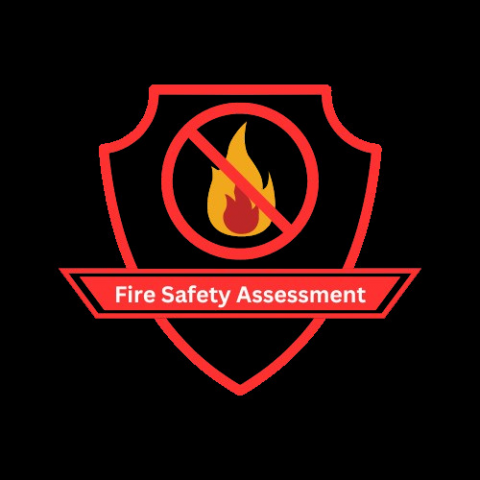

Description
In today’s increasingly complex world, ensuring the safety of people and property from fire hazards has become more critical than ever. One of the most effective ways to achieve this is through a meticulous fire risk assessment. This process not only helps in identifying potential fire risks but also plays a crucial role in preventing potential fire incidents by implementing proactive measures.
What is Fire Risk Assessment?
A fire risk assessment is a systematic examination of your premises to identify potential fire hazards, evaluate the risks associated with them, and determine the adequacy of existing fire safety measures. The assessment helps in understanding the fire hazards that could pose a risk to life and property, evaluating how likely these hazards are to cause a fire, and determining the potential impact if a fire does occur.
Why is Fire Risk Assessment Important?
Regulatory Compliance: In many countries, including the UK, conducting a fire risk assessment is not just a best practice but a legal requirement. Regulations such as the Regulatory Reform (Fire Safety) Order 2005 mandate that all non-domestic premises must have a fire risk assessment in place. Compliance with these regulations is crucial to avoid legal repercussions and ensure the safety of occupants.
Protecting Lives: The primary purpose of a fire risk assessment is to protect the lives of people who may be affected by a fire. By identifying and mitigating risks, you can significantly reduce the chances of fire-related injuries or fatalities.
Safeguarding Property: Fires can cause extensive damage to property, resulting in costly repairs or even complete loss. A fire risk assessment helps in implementing preventive measures that protect your assets and minimize financial losses.
Insurance Requirements: Many insurance policies require regular fire risk assessments to ensure coverage. Failure to conduct these assessments might lead to complications in claims or even denial of coverage in the event of a fire.
The Fire Risk Assessment Process
Identify Fire Hazards: The first step involves identifying all potential fire hazards within the premises. This includes sources of ignition, combustible materials, and any other elements that could contribute to a fire.
Evaluate Risks: Once hazards are identified, the next step is to assess the risks associated with them. This involves considering the likelihood of a fire starting and the potential impact on people and property if it does.
Assess Existing Controls: Evaluate the effectiveness of current fire safety measures and controls in place. This includes fire detection systems, alarm systems, fire extinguishers, and emergency exits.
Implement Improvements: Based on the assessment, develop and implement strategies to address identified risks and enhance fire safety. This might involve installing additional fire safety equipment, improving emergency procedures, or making structural modifications.
Document and Review: Document the findings and actions taken during the assessment. Regular reviews and updates of the fire risk assessment are essential to ensure ongoing compliance and safety.
Benefits of a Comprehensive Fire Risk Assessment
Enhanced Safety: By identifying and addressing potential risks, a fire risk assessment significantly enhances the overall safety of the premises.
Reduced Liability: Proper assessment and implementation of fire safety measures reduce the risk of legal and financial liabilities associated with fire incidents.
Peace of Mind: Knowing that your property has been thoroughly assessed and is equipped with appropriate safety measures provides peace of mind to both property owners and occupants.
Choosing the Right Fire Risk Assessment Provider
Selecting a reputable and experienced fire risk assessment provider is crucial to ensuring a thorough and effective evaluation. Look for providers who are qualified, certified, and have a proven track record in fire safety assessments. They should offer comprehensive services, including detailed reports, actionable recommendations, and support in implementing safety measures.
Conclusion
A fire risk assessment is a vital component of any comprehensive fire safety strategy. By identifying potential hazards, evaluating risks, and implementing effective controls, you can protect lives, safeguard property, and ensure regulatory compliance. Regular assessments and proactive measures contribute to a safer environment and provide invaluable peace of mind.
Reviews
To write a review, you must login first.
Similar Items